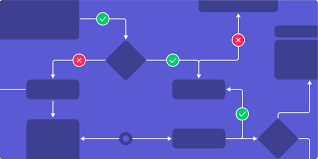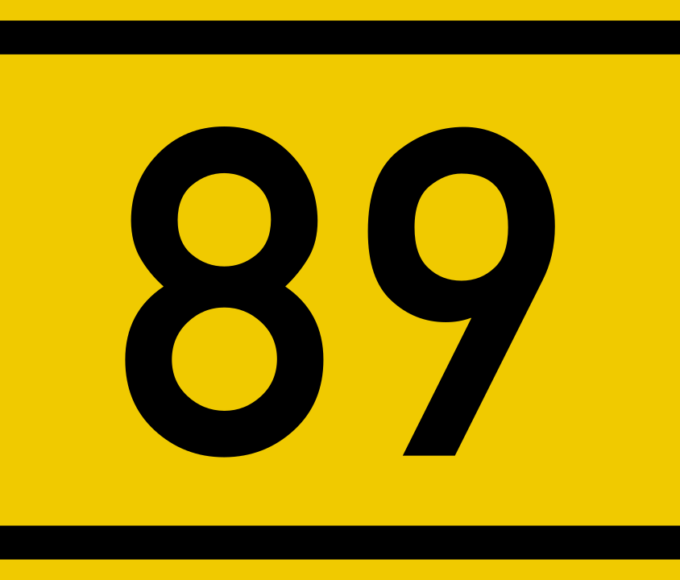A workflow diagram simplifies the tracking and management of business processes. It allows you to represent business processes and tasks using shapes and other visual elements, making them easier to understand, share, and edit.
Let’s discuss the benefits of creating diagrams and how you can create one for your business.
What Is a Workflow Diagram?
A workflow diagram is a visual representation of a workflow or business process. It comprises a flowchart showcasing each step of the workflow, along with its responsible parties and dependencies. A workflow diagram lets you represent business processes in an intuitive way, making them easier to execute and monitor.
Why Should You Create a Workflow Diagram?
The core purpose of a workflow diagram is to visually demonstrate your business processes, allowing team members and stakeholders to understand and act upon them.
A business process typically consists of various tasks and dependencies. Representing them all using blocks of text can be confusing and difficult to comprehend. A diagram allows you to use boxes, diamonds, colors, and other graphic elements to display every task, dependency, and responsibility associated with the business process.
As a result, all the involved parties, including stakeholders, managers, and team members, can understand all the details and stay on the same page.
Workflow diagrams have applications in many industries, including:
- Healthcare: Steps involved in the treatment of a patient, including booking an appointment, performing blood tests, getting medication, etc.
- Software Development: Step-by-step process of developing a software product
- Education: Steps involved in college admissions, such as submitting documents, paying fees, selecting subjects, etc.
- eCommerce: The steps taken by a customer to complete a purchase
- Marketing: Steps in executing a marketing strategy, such as devising a plan, getting it approved, executing it, and tracking its performance
However, the use of workflow diagrams isn’t limited to these industries. Any business, regardless of its industry, can use workflow diagrams to streamline its workflows and processes.
How to Develop a Workflow Diagram?
Before delving into the process of creating workflow diagrams, let’s look at some of its essential elements. Shapes make a significant portion of a diagram. The following shapes are commonly used:

- Oval: Beginning and endpoints of a workflow
- Rectangle: Space for putting instructions
- Diamonds: Decisions
- Arrows: For connecting shapes
- Circle: Connectors
A workflow diagram has multiple stages, and each stage is represented by a shape and arrow. Every stage has three components:
- Input: Information, action, decision, equipment, or capital that impacts the next step
- Transformation: The change in the ownership, location, or other characteristics of the input
- Output: The final product after the transformation
That said, here’s a step-by-step process for creating a diagram.
Select the Type of Diagram and Its Objectives
A workflow diagram can be of various types, such as a process flow diagram, swim lane diagram, business process modeling notation (BPMN), and more. Decide which process you want to create a workflow diagram for.
Determine the Start and Endpoints
The next step is to determine the starting and ending points of your workflow. All the remaining steps in the process will happen between these two points.
Collect All the Needed Information
Conduct research and talk to all the involved people to collect all the information you need to develop a diagram. You need to know each step involved in the process and the person in charge of it. It will be helpful to have information regarding timelines, challenges, deviations, etc.
Be sure to identify and eliminate any potential inefficiencies at this step. Categorize all tasks into the following categories:
- Must have
- Useful
- Nice to have
Streamline your workflow based on these tasks by prioritizing must-have tasks first, followed by useful and nice-to-have tasks.
Create an Initial Diagram
Once you have the needed information, create a rough initial diagram. This isn’t your final diagram, but it should contain every possible detail you could incorporate.
Share the initial diagram with shareholders and other involved parties like department heads and managers and collect their feedback.
Finalize Everything
Make changes to the initial diagram based on the feedback collected and create the final workflow. Turn all the data you have into well-defined visuals. It’s best to use a workflow diagramming tool here, as it allows you to create editable and shareable workflow diagrams.
Conclusion
Workflow diagrams can go a long way in streamlining business processes, especially in companies where multiple departments and stakeholders are involved. When you create a workflow diagram, make sure it’s shareable and editable.
You can create a workflow diagram using a pen and paper, but it’s better to use a dedicated diagramming tool for better speed and efficiency.








Leave a comment